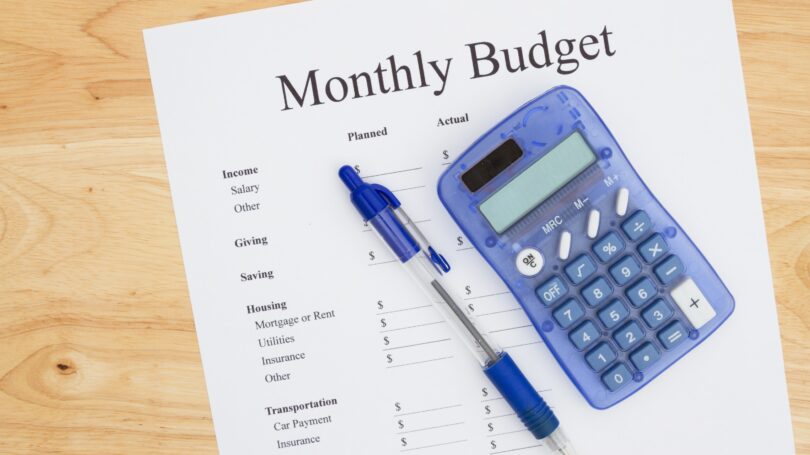We live in a world where pretty much anything that can be automated is. You can subscribe to grocery delivery so fresh food shows up at your doorstep every week, without you having to create a list or head to the store. You can program your home’s heating and cooling systems to turn on and off at set times and tell your exterior lights when to switch on. You can get an app on your phone that tracks every single purchase you make, then lets you know when you’ve gone over budget.
Automation can make life convenient. But it also detaches you from the world around you. If you’re having difficulty managing your finances, such as sticking to a budget or reaching savings goals, that detachment can prove particularly troublesome.
Sometimes, it helps to go old-school by keeping track of your finances manually instead of letting a budgeting app keep track of them for you. Enter: Kakeibo.
“Kakeibo”- which is pronounced “kah-keh-boh” – is a Japanese word that translates to “household account book.” A few English-language versions of kakeibo journals have recently been published, but if you have a blank notebook handy, there’s no reason to rush out and buy a special ledger. Here’s everything you need to know to put kakeibo to work for you.
What Is Kakeibo?
Kakeibo is a way of manually tracking your finances to help you stick to a budget and reach your savings goals. According to The Journal of Japanese Studies, the concept of kakeibo is credited to Hani Makoto, the first female journalist in Japan, who published one of the first magazines targeted at a housewife audience, “Fujin No Tomo,” in 1908.
In the pages of her magazine, Makoto encouraged her readers to develop schedules and systems for household tasks. She also promoted the concept of homemakers as managers of the household finances and advised them to set aside savings for their families.
Kakeibo revolves around four key questions:
- How much money do you have available?
- How much do you want to save?
- How much money are you spending?
- How can you improve?
By taking a close look at what you’re doing with your money and asking yourself in-depth, reflective questions, you can change your financial habits and reach your goals.
Why Bother to Budget?
Imagine trying to lose weight without paying attention to what you eat or stepping on the scale from time to time. You might drop a few pounds, but you have no way of knowing for sure or identifying what changes led to your weight loss.
The same is true when it comes to money. If you want to set and reach any sort of financial goal, you need to know what’s going on with your money. You can’t just get your paychecks each month, spend away, and hope for the best.
Sitting down and taking a close look at your finances at the start of each month, then taking the time to write down everything that’s coming in and going out, might seem like a drag, but it’s a must if you want to tame the money beast once and for all.
Another benefit of manually tracking your expenses, income, and saving goals is that it encourages mindfulness. You have to take a close look at your money and hold yourself accountable for what you’re spending. If you know you want to save $100 one month, for example, you’re more likely to think carefully before you spend some of your limited disposable income on something you don’t need or really even want.
Why Track Your Money Manually?
Although it can be easier to rely on an automated budgeting app, you’re more likely to process the information you record when you do so by hand.
A study published in Psychological Science found that students who took notes in class using longhand were better able to answer in-depth conceptual questions on a subject compared with students who took notes on their laptops. The students who wrote out their notes by hand paraphrased and adjusted what they were hearing, taking the time to process the information as they recorded it.
Manually recording your goals, including your financial goals, can also make you more likely to achieve them. When you spend a few minutes each month thinking about and writing down what you want to save, you create an easily accessible record of that specific goal.
The process of writing something down can also cement the idea in your brain. As you write down that goal to save $100, you analyze it and begin to think of ways to achieve it. This can be what kickstarts the actions you take to reach that goal.

How to Use Kakeibo
You’ve purchased an official kakeibo book or are recording your details in a blank journal or notebook. Now what?
Using kakeibo is a multi-step process. Some of the steps you do at the start of a new year, some you do at the beginning of each month, and others you do throughout the month. At the end of each month, you take some time to review your spending and goals.
The process gives you both a big-picture view of your finances and an in-depth, detailed look at how your everyday spending plays out. Here’s how it works.
Step 1: Conduct an Annual Review
The commercial kakeibo journals available in English include a yearly planner, which asks you to start your ledger with a general idea of your income and expenses for the year ahead. In this section, you can record expenses that might happen just once a year, such as paying for a vacation or your car insurance. You can also record holiday spending plans here.
Look at your previous year’s spending to get an idea of what to include in your annual review. Also think about what you plan to accomplish during the next 12 months and what infrequent bills might come due.
Step 2: Create a Monthly Spending Plan
At the start of this section, you’ll answer two questions:
- How Much Money Will Be Coming In? Record your sources of income for the month, identifying each source – salary, freelance income, side hustle income – and when you expect the money. Add up the total amount.
- How Much Money Will Be Going Out? Record your monthly fixed expenses, such as rent, utility bills, health insurance, and debt payments.
Subtract your fixed expenses from your income to answer the first question of kakeibo, “How much money do you have available?”
Next, think about your savings goals for the month. How much would you like to save, and what are you saving for? Record both the amount of your savings goals and the purpose. Then, subtract this amount from the amount you have available. Ideally, your savings goal won’t be the full amount of your available money.
At this point, you have your fixed expenses covered, but you haven’t budgeted for miscellaneous expenses, such as groceries, personal care, and occasional fun things. That’s what the next step is for.
Step 3: Determine Your Weekly Spending
After you’ve figured out your big-picture annual and monthly spending, it’s time to zero in on your weekly spending. To determine how much you have to spend each month, take the amount of available money you have left after subtracting your savings goal. Then, divide that amount by the number of weeks in a month, remembering that some months have five weeks. The number you get is how much you can spend each week.
Record your weekly spending as it happens. You can divide your weekly expenses into categories to help you keep track of what’s going where and where you might have room to improve. It’s best to keep your categories simple. For example, some kakeibo planners recommend using the following categories:
- Survival. These are non-fixed expenses you can’t really live without, such as food and soap.
- Optional/Wants. These are things you can live without, such as extra clothing or dinner out.
- Extra. These are sporadic expenses you can’t necessarily plan for during your yearly review. Extras might include a friend’s wedding gift, a repair bill for your car, or medical bills.
- Cultural. You might lump cultural spending – such as books, museum visits, or your Hulu subscription – into the “optional/wants” category, but some kakeibo books have culture-related expenses as a separate category.
To help you see at a glance where your spending is going, you can color-code your categories. For example, you could use a blue pen for survival expenses, a red pen for wants/optional, and a green pen for extras.
Step 4: Do a Monthly Review & Analysis
At the end of each month, take a few minutes to review your spending and saving for the month. This review helps you answer the question “How can you improve?”
Record how much you had to spend, how much you actually spent, and how much you saved. To find ways to improve, ask yourself some detailed questions:
- Did you reach your savings goal?
- What did you do to reach your goal?
- Did you spend too much in some categories?
- How can you improve next month?
After asking yourself each question, write down your responses in your journal so you have something to reference next month as you plan your spending or if you find yourself about to make a purchase you don’t need.

Drawbacks of Kakeibo
The biggest drawback of using kakeibo is that it’s up to you to remember to stay on top of it. With an automated budgeting app, the system pulls information from your bank or credit cards to keep track of what you’re spending. With kakeibo, you’re responsible for recording everything and for holding yourself accountable for your spending.
For some people, that might not be a big deal. You might welcome the opportunity to jump in and keep better track of your spending. But if you don’t want to carry a journal with you everywhere you go or can’t trust yourself to remember to record your expenses after the fact, kakeibo might be a challenge for you.
Final Word
If you’ve struggled to create and stick to a budget, give kakeibo a try. You might find that manually recording everything helps you finally get your financial life in order.
Kakeibo also goes a step beyond most budgeting methods by asking you to look carefully at how you’re using your money and consider what you can do to improve. It offers a big-picture, mindful view of your finances that many budgeting systems lack, and that view can be what you need to set yourself up for financial success.
Have you tried using kakeibo or manually recording your budget? Did it work for you?
